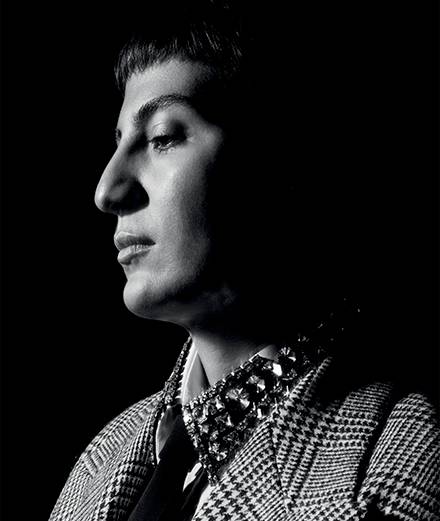

Numéro: One of your first pieces, the Rover Chair was born from the improbable fusing of a Land Rover car seat and steel pipe fittings. The Matrizia sofa is inspired by an old mattress found in New York. Can you still find treasures on the streets?
Ron Arad: There are still quite a lot of pretty things out there. Most of which could be hung in a gallery and in fact are much more beautiful than anything we could invent in a studio. What’s changed is that we no longer pay attention. We’ve got used to designers changing everything for us. The innocence has gone… we just wait for it to land on us. We look at things with the burden and privilege of knowledge.
You’ve created outdoor furniture for companies including Magis, Moroso and Vitra. Apart from using materials that can adapt to changing seasons, is there a different approach to creating a chair for the house and chair for the garden?
To be honest I don’t bother too much with those issues. I don’t really read the briefs given by the brands either. For example, I’m thrilled to discover these new waterproof fabrics as a consumer, but in my work I often end up creating my own material anyway. In the end what matters isn’t the method but the result. In my case I’d say that walking outside in the rain will give better results that asking me to make something by thinking about the rain. Even more importantly I don’t want to create for the outside what already exists for the inside. With the Tea Pavilion we wanted to make sure we didn’t lose the link with the environment. Even if the main function of a shelter is to keep out the elements, the final shape had to be fluid enough that we still feel outside, and not in a bubble isolated from everything else.


We see this permeability of space with other architects like Norman Foster. Is it an obsession of our times?
Of our times, I’m not sure. One of mine though for sure! Not many people know it, but my greatest architectural pride is the Holon Design Museum in Israel. A few weeks before it opened, a rabbi came to hang a mezuzah [the mezuzah contains biblical scriptures and denotes the passage from outside to inside] to bless the building. All public buildings in the country have one. Apart from the fact I am not religious, I tried to explain to him how his gesture would ruin the very concept of the architecture which has been conceived so that you cannot delimit the transition between interior and exterior. He spent two hours looking for somewhere to attach the mezuzah, before giving up. The Holon Design Museum is thus the only building in the country without one… I’m very honoured!
You are an architect and a furniture designer, but you also create one-off collector’s piece. A chair that costs than 10,000 euros, we’d avoid putting that outside, even maybe sitting on it…
Personally I like objects that age with time… but it’s true that most collectors will avoid putting a valuable piece out in the snow, even if it was made for that. Design pieces, especially limited editions, are surplus. When you’re hungry, you eat what you find. When you’re not hungry you look for recipes and spices, you work with the textures. Culture is the very definition of luxury. And the value increases if it doesn’t work. One day Rolf Fehlbaum, son of the founders of Vitra, came to give a lecture to my students and he told them, “As an industrialist I am interested in success, as a collector I am interested in failure.”
Sadly, for you most of your pieces are a success! The MT Rocker went down a storm at a Hong Kong auction earlier this year, selling for 135,000 euros. Do you follow the prices of your pieces?
Not really. The creative process of designers often involves serious production costs and sometimes I’m really under pressure to make things that don’t cost so much, to avoid taking too much risk. Obviously I don’t pay any attention.










